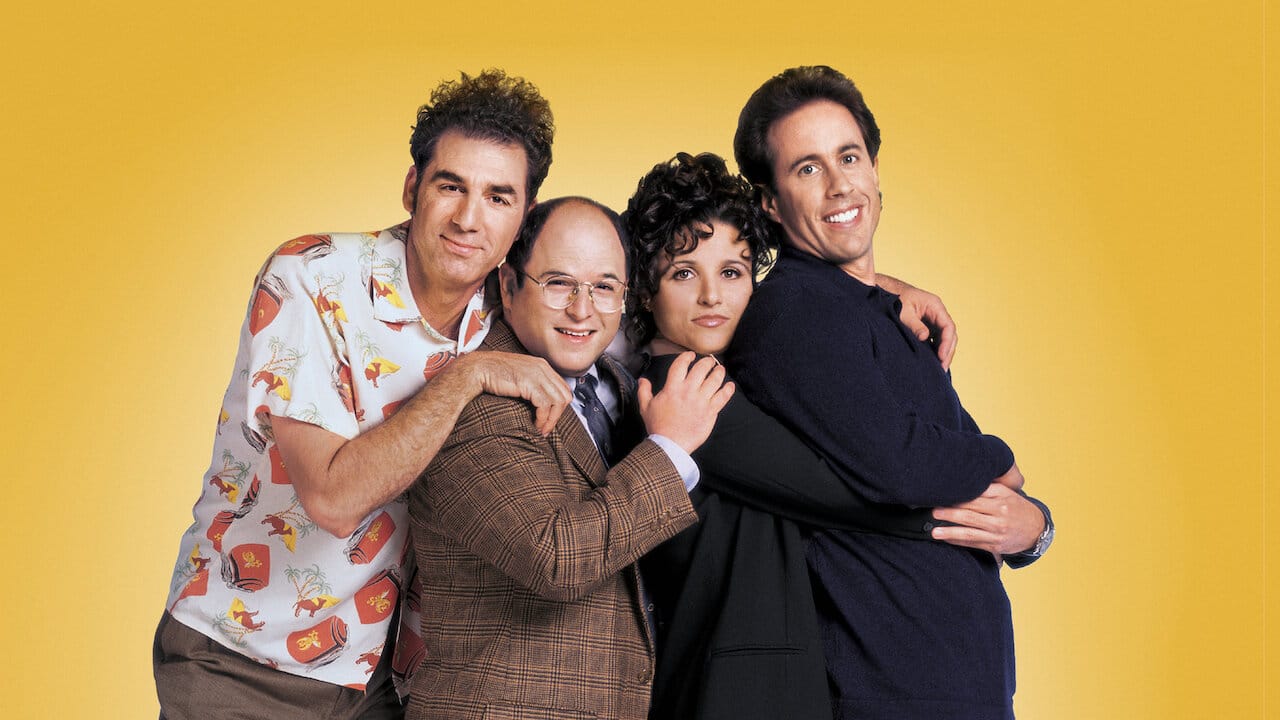A quarter of a century ago, on May 14, 1998, the final episode of Seinfeld was broadcast, ending one of the most significant sitcoms of all time after nine seasons and 180 episodes. In fact the self-styled “show about nothing” was so important we can talk about the pre-Seinfeld and post-Seinfeld eras.
Set in Manhattan, Seinfeld focused on the minutiae of daily life for four friends: Jerry (Jerry Seinfeld), his best friend, George Costanza (Jason Alexander), his ex-girlfriend Elaine Benes (Julia Louis-Dreyfus), and his neighbour Cosmo Kramer (Michael Richards).
Such a setup might sound familiar to fans of 90s American comedy shows. But Seinfeld abandoned the traditional sitcom structure of an A story and a B story and instead gave each character their own storyline, full of self-aware and metatextual jokes.
While co-creators Larry David and Jerry Seinfeld wanted a single-camera, filmlike aesthetic, the network, NBC, forced them to adopt a multi-camera setup taped in front of a live studio audience to supply the laughter track.
Eventually, David and Seinfeld subverted that by shooting more scenes using single cameras and externally so that they could not be taped in front of a studio audience. They also employed a rapid-paced, quick-cutting, music-led style that was then unusual for sitcoms.
This created the opportunities for expanding the narrative and cinematographic possibilities we’ve seen since. Seinfeld was a forerunner of the cinematic television we watch today.
Seinfeld tackled a host of then-taboo topics, which were part of everyday life, including antisemitism, same-gender relationships and masturbation. But because censorship and social mores at that time would not allow the characters to say the word “masturbation”, instead they referred to who can be the “master of their domain”. Such topics are commonplace these days.
All four characters are antiheroes. None of them is particularly likeable nor were they intended to be. They are morally ambiguous, malicious, selfish, self-involved and extremely petty. They refuse to improve themselves, evolve or even manifest the slightest desire for change. They learn no lessons and the arc of the entire series revisits those they have wronged.
If all four leads in Seinfeld are bad, then George is the worst. Modelled on co-creator, Larry David, he is the epitome of male privilege. Such characters populate the televisual landscape today, not least in David’s later show, Curb Your Enthusiasm, in which he stars as a version of himself.
Elaine Benes stands out as a strong female character for the time. In one episode, in the face of a shortage of contraception, she judges whether her sexual partners are “sponge-worthy” or not. Julia Louis-Dreyfus plays her with a tremendous physical comedy, as well as comic timing. She was unapologetic, and her sexuality and work life are foregrounded. Clearly, this set the template for her later series, Veep.
Watching Seinfeld again now – and I have re-watched every episode – some of it lands terribly today. Take the episodes with Babu Bhatt, a Pakistani immigrant who runs a restaurant across the street from Jerry’s apartment. He appears in three episodes of the show and is known for his catchphrase, “Very bad man!” which he uses to insult Jerry.
The problem is that Babu is played by actor Brian George, who was born in Jerusalem to Iraqi Jewish parents, and is clearly wearing makeup and affecting a south Asian accent.
At the same time, the lack of diversity in Seinfeld is striking. New York is represented by Manhattan alone, rather than any of the other four boroughs that make up the metropolis. Its image of the Big Apple is white and middle class.
As journalist and screenwriter Lindy West has observed, the series featured only 19 black people, 18 of whom were one-off characters such as “the waiter” and “the guy who parks cars”. There was only one recurring black character – Kramer’s lawyer, Jackie Chiles – whose mimicry of OJ Simpson’s lawyer, Johnnie Cochran, makes him look like a real shyster.
So, while Seinfeld may feel like a dated product of the late 1990s, it was ahead of the curve aesthetically, structurally and in terms of narrative and characterisation. Today’s television would be unthinkable without it.
Nathan Abrams is Professor of Film Studies, Bangor University. This article is republished from The Conversation under a Creative Commons licence







Click here to change your cookie preferences